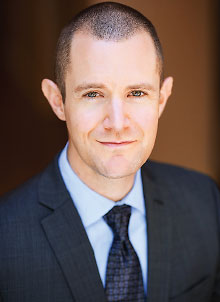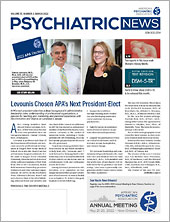To varying degrees, all psychiatrists are now familiar with what it means to provide care during a disaster or concurrent disasters. “We’ve all at least glimpsed the world of disasters,” said Joshua Morganstein, M.D., chair of the APA Committee on Psychiatric Dimensions of Disasters, captain in the U.S. Public Health Service, associate professor and vice chair of the Department of Psychiatry at the Uniformed Services University (USU), and deputy director of the University’s Center for the Study of Traumatic Stress (CSTS).
Yet psychiatrists may be less familiar with the public mental health challenges that often predominate during disasters. Feelings of distress, for example, are quite common, but may not rise to the level of illness requiring treatment. During APA’s Annual Meeting, Morganstein and his co-presenters, James Curtis West, M.D., and Jonah Winakor, will present a two-part session on disaster and preventative psychiatry that aims to blend attendees’ knowledge of clinical care with a public mental health approach to disasters. The sessions are titled “Disasters and Mental Health: Helping Your Patients Deal With Adverse Effects of Climate Change, Pandemics, and Mass Violence, Parts 1 and 2.”
West is a member of the APA Committee on Psychiatric Dimensions of Disasters, associate professor and deputy chair of the Department of Psychiatry at USU, and a scientist with CSTS. Winakor is a fourth-year medical student at USU and a second lieutenant in the U.S. Army.
The goal of the sessions is to help participants think more broadly about the range of experiences that people have during disasters, Morganstein said. In addition to focusing on individuals and potential illnesses, it is important to consider approaches aimed at promoting well-being and fostering resilience, he continued. Interventions should aim to reduce individual and community distress and enhance feelings of safety, social connectedness, and optimism.
Very often, the focus is on finding individuals with psychiatric disorders, West said. “While important, that approach overlooks a large number of people who are not ill but are still struggling,” he said. “They need support, they need interventions, but that intervention may not be multiple sessions of individual psychotherapy.”
“Wellness interventions are often focused on individual self-help and self-care, which are important, but by themselves are often insufficient to sustain individuals, particularly during protracted disaster events,” Morganstein said. For example, risk and crisis communication can be an effective intervention tool.
The back-to-back sessions function like a course in disaster and preventative psychiatry, Morganstein said. The first session will outline the fundamental principles, and the second will be a simulated “disaster challenge,” during which participants will adopt different roles as they work through a disaster scenario together.
In part two, participants will take on roles such as system leaders, first responders, or affected community members, such as individuals with serious mental illness. As the simulated disaster progresses, participants will be forced to make decisions in the context of the disaster, interact with each other, and work out conflicts.
“What we’ve tried to do is create an experience that is educational but also as immersive as possible,” Winakor said. At USU, students participate in an exercise called Operation Bushmaster in which they practice combat casualty care under realistic conditions. “We took on a role and had that role’s interest at heart while we were working through the exercise,” Winakor explained, and the intention is to bring that experience to participants at the Annual Meeting.
“We hope participants will walk away with a better understanding of the principles of disaster mental health and how those can be used to address and reduce gaps, like health disparities and inequities, which are only amplified in times of disaster,” Morganstein said. ■
“Disasters and Mental Health: Helping Your Patients Deal With Adverse Effects of Climate Change, Pandemics and Mass Violence” will be held Monday, May 23. Part 1 will be held from 1:30 p.m. to 3 p.m., followed by Part 2 from 4 p.m. to 5:30 p.m.

